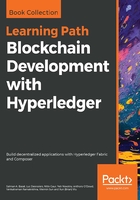
Business considerations for choosing a blockchain framework
Numerous criteria come into play when organizations are evaluating whether to adopt blockchain to address their pain points. Here are some considerations from a business perspective:
- Open platform and open governance: The technology standards a business chooses will set the stage for enterprise blockchain adoption, compliance, governance, and the overall cost of the solution.
- Economic viability of the solution: Whatever blockchain framework an organization chooses should provide cost alignment to its existing business models, chargebacks, compute equity, and account management. This flows into ROI.
- Longevity of the solution: As organizations aspire to build a trusted network, they'll want to ensure that they can sustain the cost and operation of the network so that it can grow and scale to accommodate additional participants and transactions.
- Regulatory compliance: Compliance issues are closely tied to transaction processing and can include events such as industry-specific reporting and analysis for business workflows and tasks, both automated and human-centric.
- Coexistence with adjacent systems: A blockchain network needs to be able to coexist with the rest of the enterprise, network participants, and adjacent systems, which may have overlapping and complementary functions.
- Predictable costs of business growth: Business growth depends upon predictable metrics. Historically, a lot of industries have focused on transactions per second, but that measurement differs from system to system based on system design, compute costs, and business processes.
- Access to skills and talent: The availability of talent affects costs as well as maintenance and the longevity of a blockchain solution as the industry and technology evolve with continued innovation.
- Financial viability of technology vendors: When choosing vendors, it's vital to think about their viability when it comes to long-term support and the longevity of your blockchain solution. You should examine the long-term vision and the sustainability of the vendor or the business partner's business model.
- Global footprint and support: Blockchain solutions tend to involve business networks with a global reach and the related skills to support the network's expansion with minimal disruption.
- Reliance on technology and industry-specific standards: Standards are critical, not only in helping to standardize a shared technology stack and deployment, but also in establishing an effective communication platform for industry experts to use for problem solving. Standards make low-cost, easy-to-consume technology possible.
Blockchain vendors offer various specializations, including:
- Variant trust systems: Consensus, mining, proof of work, and so on.
- Lock-in to a single trust system
- Infrastructure components that are purpose-built for particular use cases
- Field-tested design through proof of concept
The technological risk of a vendor not adhering to reference architecture based on standardized technology set is a fragmented blockchain model for the enterprise.
From a business point of view, an open standards-based approach to blockchain offers flexibility, along with a pluggable and modular trust system, and therefore is the most ideal option. This approach keeps an enterprise open to specialized blockchains such as Ripple, provides a provisioning layer for the trust system, and offers a separate business domain with the technology to support it.